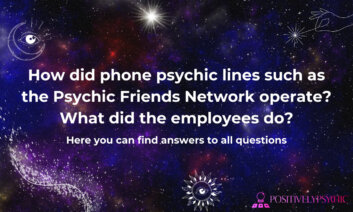Is the ability to lucid dream an indicator of psychic ability?

Lucid dreaming is a state of consciousness in which the dreamer is aware that they are dreaming, and can sometimes control upon what’s happening in the dream. While it is often associated with paranormal activities like astral projection and precognitive dreams, there is no solid evidence linking lucidity to psychic ability. In fact, lucid dreaming has been scientifically studied for its potential use as an educational tool in improving problem-solving skills, creativity, and emotion regulation. Therefore, it can be said that while lucid dreaming is not an indicator of psychic ability, it may help to enhance our mental faculties.

While this ability often requires some practice, it does not indicate any sort of psychic or paranormal ability beyond the potential for enhanced creativity.

Lucid dreaming and psychic ability are separate phenomena with different characteristics. Lucid dreaming refers to the state of being aware that you are dreaming and having control over the dream’s content. It primarily involves exploring and interacting within the dream realm, which is an internal experience. Psychic ability involves accessing information or perceiving beyond the ordinary senses, often related to external events or people. While there may be instances where individuals with psychic abilities have lucid dreams, lucid dreaming itself does not serve as a direct indicator of psychic ability. Each ability operates in its own domain, and their co-occurrence in an individual does not necessarily imply causation or correlation.

While the ability to lucid dream can be a fascinating and enriching experience, it does not necessarily indicate psychic ability. Lucid dreaming is a state of awareness within a dream where the dreamer realizes they are dreaming and can actively participate or control the dream. It primarily involves the manipulation of one’s own subconscious mind rather than accessing external psychic information. Psychic abilities, on the other hand, involve perceiving or accessing information beyond the ordinary senses. While some individuals may have both the ability to lucid dream and possess psychic abilities, they are distinct phenomena that should not be automatically linked.
What Is Lucid Dreaming and How Can You Achieve It?
Lucid dreaming is a fascinating phenomenon that occurs when you become aware that you are dreaming while still within the dream itself. It’s a state where you can actively participate in and control the dream, almost like being the director of your own subconscious movie. Lucid dreaming opens up a world of possibilities for exploration, self-discovery, and even problem-solving within the dream realm. Here’s a guide on how you can achieve it:
-
Reality Checks:
Perform reality checks throughout the day to cultivate the habit of questioning your reality. This helps to train your brain to carry over this habit into your dreams. Reality checks can include looking at your hands, reading text, or attempting to push your finger through your palm. If these checks fail in your dream, you’ll realize you’re in a dream state. -
Dream Journaling:
Keep a dream journal by your bedside and record your dreams as soon as you wake up. This practice helps improve dream recall and trains your brain to pay more attention to your dreams. It also allows you to identify recurring dream signs and patterns that can serve as triggers for lucidity. -
Reality Testing in Dreams:
Once you’ve established a habit of reality testing in waking life, make it a practice within your dreams as well. As you go about your dream, perform reality checks to determine if you’re in a dream state or not. With time and practice, this awareness will become more automatic, leading to lucidity. -
MILD Technique:
Mnemonic Induction of Lucid Dreams (MILD) is a technique developed by Stephen LaBerge. Before falling asleep, repeat affirmations to yourself, such as “Tonight, I will have a lucid dream,” and visualize yourself becoming aware within a dream. This technique helps program your mind to be conscious during dreams. -
Wake-Back-to-Bed (WBTB):
Set an alarm to wake you up after five or six hours of sleep. Stay awake for a short period, engaging in activities that stimulate your mind, such as reading about lucid dreaming or practicing visualization. Then, go back to bed with the intention of having a lucid dream. This method takes advantage of the heightened state of awareness during the early morning hours.
Remember, achieving lucid dreaming takes time, practice, and patience. It’s a skill that can be developed with dedication and consistent effort. Once you experience the exhilaration and limitless possibilities of lucid dreaming, it can become a transformative and rewarding practice in your life. Sweet dreams and happy lucid exploring!



